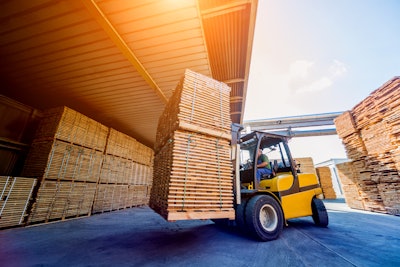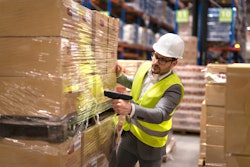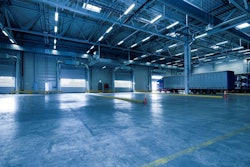
Forklifts are essential for efficient operations in warehouses, distribution centers, and on loading docks worldwide. They handle the everyday heavy lifting that keeps materials moving through the supply chain. With the challenges facing material handling operations today—labor shortages, rising energy costs, site emissions, and increased demand—choosing a forklift powered by the right energy source can have a big an impact on an operation and the environment.
Supply chains contribute significantly to a company’s carbon footprint. In fact, carbon emissions in supply chains are, on average, four times those of a company’s direct operations. Forklift fleets are often the workhorse of these operations, and using propane-powered forklifts creates an opportunity for warehouses and distribution centers to significantly improve their carbon footprint.
Propane equipment ensures sustainable, low-carbon operation
Propane is a clean, low-carbon alternative energy source and, when used to power forklifts, can reduce sulfur oxide (SOx) emissions by 76 percent compared with electric equipment. It can also reduce nitrogen oxide (NOx) and hydrocarbon emissions by 94 percent compared with diesel models, according to the Propane Education & Research Council (PERC).
PERC published a research paper, Fork(lifts) in the (Off) Road: Should We Ban Internal Combustion Engines for Electric?, that compares the lifecycle emissions of propane and electric-powered forklifts. Findings show that in most states, propane forklifts are the cleaner option, especially when considering marginal electric grid emissions – the rate at which emissions would rise or fall due to a small change in electrical load. Nearly all propane ICE forklift technologies emit extremely low criteria pollutants compared to the regulatory standards.
Forklifts with internal combustion engines (ICE) are even cleaner with hybrids, renewable propane, and blends of renewable fuels. PERC’s analysis uses publicly available engine certification emissions data published by the Environmental Protection Agency (EPA) in comparison to eGRID data of emissions from the production of electricity. The study presented the following scientific findings:
- A true zero-emissions forklift does not exist.
- Hybrid electric forklifts, when paired with both conventional and renewable fuels, emit less CO2 than battery-electric forklifts in well-to-wheel emissions, according to fuel consumption data from the EPA equipment certification database and renewable propane's carbon intensity.
- For most states, NOx emissions from propane-powered forklift engines can be less than half that of battery-electric forklifts powered by the electric grid.
- In California alone, 314,000 ICE forklifts are operating. Replacing all ICE forklifts in the state with battery-electric forklifts would require nearly 10 GWh/day of additional charging capacity.
All of these findings are significant as forklift managers across the U.S. work to navigate new emissions requirements for Class 4 and Class 5 forklifts. The California Air Resources Board (CARB) is pursuing a ban on all equipment that uses diesel, propane, natural gas, and gasoline—and mandating the use of battery and hydrogen fuel cell electric forklifts only.
When considering the full-fuel-cycle emissions of electricity including manufacturing, transportation, production and disposal of electric forklift batteries, as well as the generation and distribution of electricity, propane forklifts are consistently cleaner than electric. Companies making the choice between electric and propane-powered forklifts often assume that electric equipment produces zero emissions during operation, overlooking the full-cycle emissions profile from well-to-wheels.
Propane-powered forklifts operate safely indoors, and out, and well-maintained units can meet or exceed nationwide indoor air quality standards.
Going green doesn’t have to break the budget
Many companies trying to reduce emissions have noticed that doing so sometimes comes with a higher price tag. By switching to propane forklifts, companies can reduce their emissions more cost effectively than choosing forklifts powered by other energy sources.
Propane forklifts offer cost savings throughout ownership of the equipment. The capital costs of propane-powered forklifts can be up to 30 percent lower than those for electric, when factoring in the equipment needed for battery recharging. Propane helps avoid these extra expenses, saving money for other line items like new employees, additional training, or business development, to name a few. Businesses operating on propane may also be able to lock in a mutually beneficial fuel contract with their local propane supplier for more savings and financial peace of mind.
Selecting the best material handling equipment takes time and careful consideration. As the industry continues to evolve and trend toward greater sustainability, it’s critical for businesses to consider which equipment and energy sources they’re running day-to-day. Businesses operating on propane can decrease their carbon footprint, maximize productivity, and enhance workplace safety.






![2022 06 20 12 18 26 [digads 32976] Sdce Enveyo Entent July (2022) Jira](https://img.foodlogistics.com/files/base/acbm/scn/image/2022/06/2022_06_20_12_18_26__DIGADS_32976__SDCE___Enveyo___ENTENT___July__2022____JIRA.62b0af8bb8a18.png?auto=format%2Ccompress&fit=crop&h=167&q=70&w=250)













